Frustrating, isn’t it?
You can easily assess the marketing performance and key metrics of so many areas responsible for your company' growth. Sales, revenue, user retention, customer acquisition cost, customer lifetime value, marketing spend.. they're no mystery to you at all, and tools like Google Analytics make that easy for you.
But we bet you struggle to tell whether your inbound marketing strategy is working, right?
True, you see traffic growth on your inbound marketing campaigns. But are those visitors even interested in your product? Do they find your content engaging? Does that engagement translate into revenue at all? and could you upsell existing customers?
You know:
The only way to succeed with inbound strategy and increase your website traffic is by knowing how well your various campaigns perform.
And then, making data-driven decisions about how to take the results from your marketing campaign even further.
Lucky for you, that’s what we’re going to show you today.
In this post, you’ll learn the 6 inbound marketing metrics that will help you and/or your sales and marketing teams track your tech business' growth
Ready? Let’s do it…
Metric 1. Funnel Completions
Goes without saying, doesn’t it?
To convert, most of your users will have to visit a particular set of pages – your conversion funnel.
As Duraid Shaihob from Marketizator points in this article on Conversion XL:
“If you want your SaaS to thrive, to constantly convert leads into happy customers, and have those customers stay with you – you need a sturdy funnel in place.”
In inbound marketing as well as in email marketing, the conversion funnel typically involves different types of content that lead a person from being a complete stranger to becoming a lead and finally, a trial user.
The thing is, though, most marketers completely ignore the inbound funnel, and as a result, have no idea how well (or not) their strategy really performs. Your inbound marketing strategy must consider the funnel from the very beginning.
By monitoring the funnel completions, you can assess the actual number of visitors who complete it, and where the others drop off.
Here’s an example of a leaky funnel. As you can see, a large percentage of visitors bounce at the middle step, indicating a serious problem with that page.
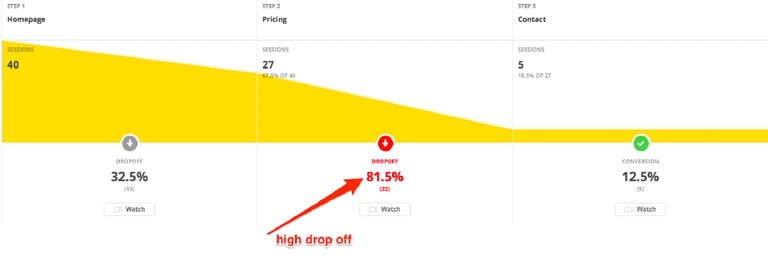
Metric 2. Calls to Action (CTA) Clicks
A person who’s finished reading your blog post has two options:
They can move on to something else like becoming blog subscribers…
…or move further down your conversion funnel.
But the latter happens only if you first tell them what you want them to do.
Otherwise, you rely on the visitor to figure out the next step in the funnel. And I'm sure we can both agree that this rarely happens. You should consider using inbound links in your content marketing strategy.
In other words, if you want to convert your users, you need to tell them what to do within the sales cycle.
How? By displaying a call to action and then measuring whether they actually click it.
Clicks on CTAs help you establish two things:
- That you’re attracting qualified visitors
- And that they find your CTAs engaging and relevant to their needs
But why is this particular metric so important?
Because, as Jacob McMillen points in this article on Crazy Egg:
“Acquiring the wrong traffic is the single biggest reason your high traffic website isn’t converting.”

Metric 3. Form Completions
Take a look at the above screenshot again.
It shows a relatively low click rate.
But it also shows a small number of form completions.

In other words, this CTA fails to engage the audience.
But it reveals a serious problem with the company’s inbound strategy – a lack of trust.
You see:
Unlike CTA clicks, completions indicate that people trust you enough to sign up to your list. This typically means that they find your content valuable, and your brand trustworthy.
Now, don’t get me wrong, having no form completion doesn’t mean that your company fails at engaging the audience.
But it might suggest a problem with your brand visibility or perception.
Metric 4. Lead Generation Conversion Rate
The primary goal of your inbound strategy is to generate leads.
You start by attracting complete strangers to the site and then, convert them into leads with a combination of lead magnets, calls to action and landing pages.
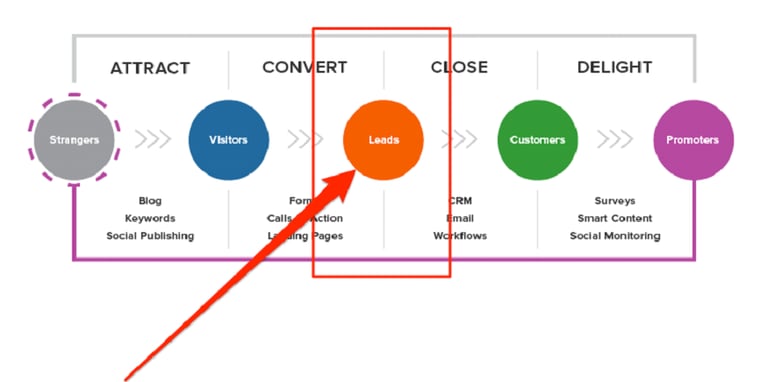
And therefore, you should monitor how many leads your inbound efforts generate.
This means tracking the overall lead generation conversion rate, monthly change (increase/decrease) in the number of leads, and visitor to contact ratio.
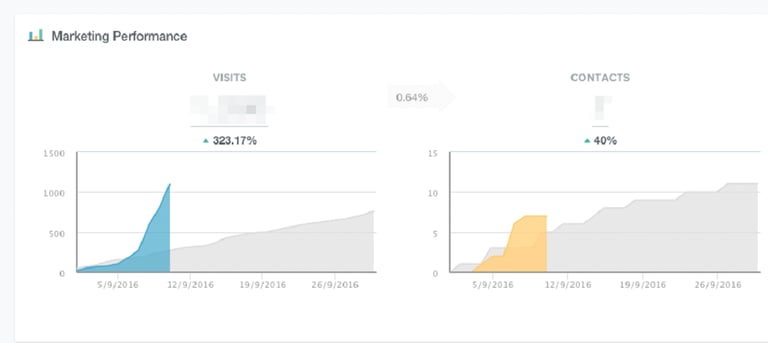
Metric 5. No. of Qualified Leads
True, leads are the ultimate product of inbound marketing efforts.
But these shouldn’t be just any leads.
You see:
Many people signing up for your lead magnet have no need for your product. You might have intrigued them with a call to action or a lead magnet, and so they’ve signed up.
But many of them have no intention of even trying out your product.
In comes as no surprise then that the quality (and not the quantity) of leads is the most important metric marketers use when assessing their inbound marketing success.
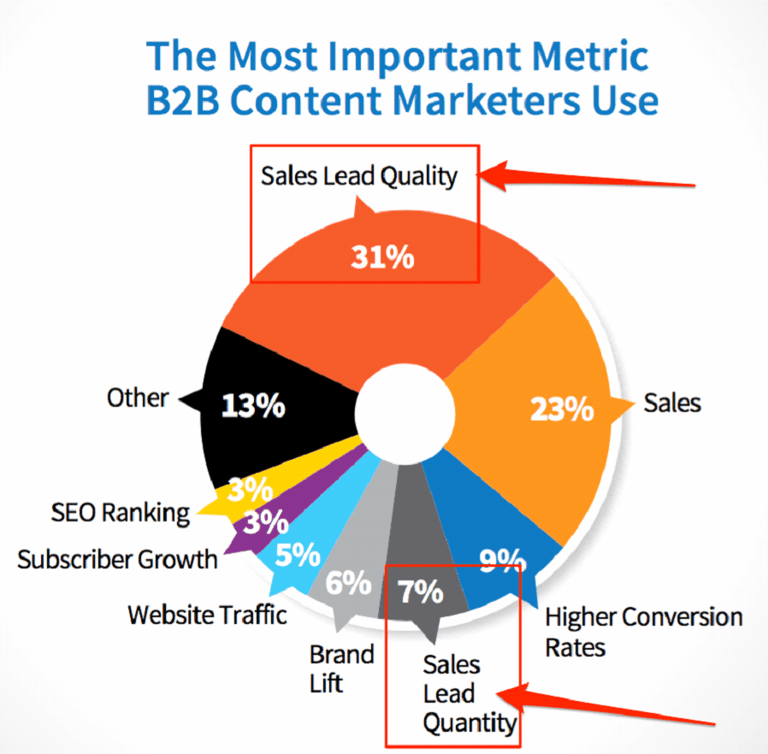
(Image source - CMI's 2016 B2B Benchmarks Report)
Tracking the number of qualified leads will help you assess the quality of your lead generation efforts. As Kelsey Meyer, co-founder of Influence and Co points out:
“Our most successful campaigns produce a low number of leads, but a high percentage of qualified leads.”
And so, although her company doesn’t generate large numbers of leads, the people who end up on their lists fit their ideal buyer profile and have a need for their product.
Metric 6. Conversion Rate Per Channel
Visitors can discover your content through many different channels.
They can find it through search engines.
Spot your social media updates or other people’s shares.
Receive new content notification emails.
Follow a link from another article.
Or click on a social media ad, for example.
But do you know which of these sources send the best traffic to your site?
And in that, which channels you should focus your attention on when promoting content?
Well, you should. Because you see:
You might be unknowingly obsessing about the wrong traffic sources.
And that’s an easy to mistake to make.
A continuous rise in traffic from a particular channel would naturally make you want to push it more.
But before you do so, check whether this traffic converts into leads.
For example, a couple of years ago, Dan Norris from WPCurve analysed his web traffic for conversions and discovered that sources he’d consider top performers weren’t bringing any conversions at all.
Those he’d typically discount, however, turned out to be the ones sending him qualified traffic.
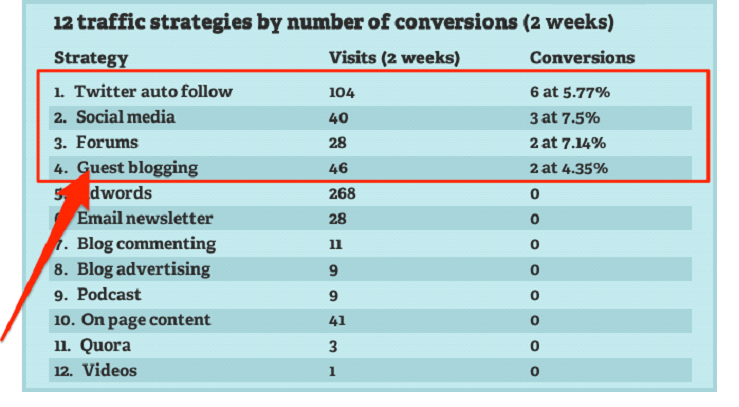
So, instead of just monitoring traffic growth per channel, track their conversions as well.
Conclusion
Fact: the only way to succeed with inbound strategy is by first, knowing how well your various campaigns perform. And then, making data-driven decisions to take those results even further.
Whether your goal is to increase the acquisition rate of sales qualified leads or conversions, understanding these metrics will be essential.
Luckily, now you know the six inbound marketing metrics that can help track the growth of your tech business.








